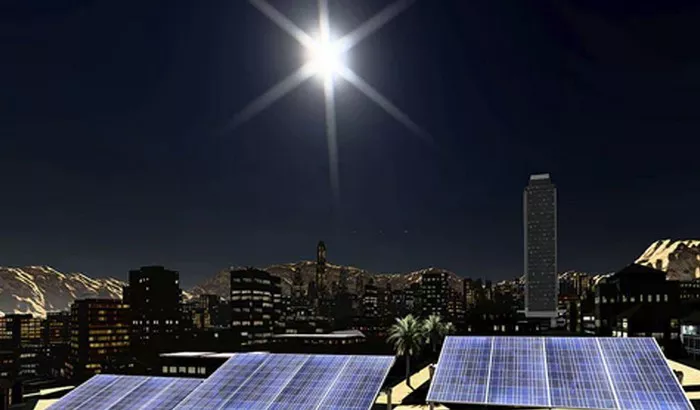Stanford University researchers have developed a revolutionary solar-adjacent technology that allows solar panels to generate power even after the sun has set. This moonlight solar panel doesn’t harness moonlight directly, but instead uses the principle of radiative cooling, a concept that has been used for centuries to keep food cool in desert environments.
Harnessing Cold Nights for Power
Traditional solar panels stop generating power at night, but the Earth continues to radiate heat, and on clear nights, surfaces release infrared radiation into the sky, cooling down below the surrounding air temperature. Stanford’s team realized that the temperature gradient created by this cooling could be converted into electricity. By attaching a thermoelectric generator to a modified solar panel, they turned this natural phenomenon into a functional power source.
The result is a solar panel capable of generating about 50 milliwatts per square meter. While this output is modest, it is enough to power small devices like LED lights, communication systems, or environmental sensors. This technology has already outperformed other energy-harvesting methods, such as wind and radio frequency harvesting, under similar conditions.
A Step Toward Energy Independence
The real promise of this moonlight solar panel lies in its potential to provide power in remote areas where nearly 770 million people still lack access to electricity. Unlike traditional solar panels, which require sunlight, this technology could offer a reliable backup source of energy at night, reducing reliance on expensive battery storage systems.
The cost of producing these panels would be far less than building battery storage systems or additional infrastructure for conventional solar panels. The thermoelectric generator used in the moonlight panel occupies less than 1% of the panel’s footprint, making it compact and affordable.
Solving the Storage Problem in Renewable Energy
One of the biggest challenges in renewable energy is storage. Batteries have a limited lifespan and can be costly. By generating electricity at night, the moonlight solar panel could help reduce the demand for batteries, especially for always-on applications like IoT devices, perimeter lighting, and agricultural sensors. Unlike traditional solar panels that rely on photovoltaics, this system operates through radiative cooling, providing a new solution to energy storage.
Radiative Cooling: A Global Trend
While radiative cooling has been around for centuries, its application in energy generation is gaining momentum. Start-ups like SkyCool Systems and researchers at ETH Zurich are exploring similar technologies to use radiative cooling for zero-energy cooling systems and to extract clean drinking water from the air in drought-stricken areas.
Stanford’s moonlight panels aim to provide a 24-hour energy solution, especially in regions with inconsistent climates. This technology offers a stable and efficient alternative to traditional daytime solar panels, making it a powerful and cost-effective solution for global energy needs.
A New Era for Solar Energy
By leveraging the cold of the night sky, Stanford researchers have created a breakthrough technology that could transform how we generate and store energy. This moonlight solar panel stands as a competitor to traditional solar systems and even rivals like Tesla’s Lunaroof, marking a significant step forward in the quest for sustainable, 24-hour renewable energy.
Related topics:

